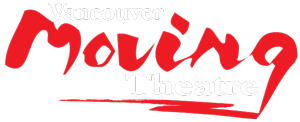Originally published in alt.theatre Vol. 10.1 (Sept. 2012)
Download a PDF version of this article.
By Savannah Walling
Art and art making are barometers of a community’s well-being, reflecting the landscapes in which we work and the golden rules by which we’re guided—from “He who has the gold can make and change the rules” to “Do unto others as you would have them do unto you.”
The inner city Downtown Eastside is highly stressed. Land development and rezoning plans are transforming Greater Vancouver into a “world class creative city” of architectural icons, glass towers, condominiums, and 24/7 mega-entertainment casinos. Global marketing has sent home prices into the stratosphere. Certain politicians encourage creative activity to attract investment capital and “improve” neighbourhoods; the pressures to transform artists into “regeneration bulldozers” are real(1). So is gentrification as a global urban “regeneration” strategy to remake areas into “whole new complexes of recreation, consumption, production and pleasure as well as residence.”(2) The recent addition of Simon Fraser University’s School for the Contemporary Arts and Woodwards Redevelopment brought thousands of new residents and office workers into the community virtually overnight. The neighbourhood is transforming under our feet: single room occupancy hotels become student and worker conversions at rents above welfare rates, and shops and services shift into boutiques and up-scale restaurants. Tensions within the community are increasing. Advocates for low income housing and human-scale streetscapes are pitted against advocates for affordable entry level housing or public safety or improved housing standards.
Two years of cut-backs and turmoil have been super-stressing arts organizations. BC’s arts funding was always well below other provinces, but in 2009 the BC Arts Council’s funding was cut in half. BC Gaming also reduced its contribution to arts, sports, educational, environmental and social services by 50%—and eliminated funding for adult arts and sports.(3)
Intensive lobbying by the BC arts community and a provincial election restored some arts funding. A one-time Olympic Sports and Arts Legacy Fund was re-directed to the BC Arts Council to temporarily maintain its grants budget at a stable level. BC Gaming recently expanded eligibility to include arts and sports for adults. But the size of the “pot” didn’t change; there’s less available for everybody.
Another side-effect is the shrinking of matching funds from federal programs. Criteria and regulations narrowing eligibility are axing programs and services. Although almost every industry has some kind of subsidy, incentive, or tax break, social services and arts are targeted for cuts. Government funding is being re-directed to prizes and one-time commemorative events. Thankfully, the City of Vancouver has continued its modest but steady support of the arts despite the tough economic climate.
We know that art won’t die and artists won’t stop making art. William Cleveland, director of the Centre for the Study of Art and Community, reminds us, “Even in the most desperate places, every war zone, prison—art making is pre-eminent, breaking out all over, a matter of survival.” But arts infrastructures, years in the making, have been decimated. Organizations struggle to stay afloat. Seasons are reduced, arts projects cancelled, postponed, or shrunk. Artists lose jobs. Political policies influence programming, production values, and the decisions about which artists, images and stories will be supported to represent our culture.
When I’m feeling overwhelmed, I remind myself of the words of my singing teacher Ralph Cole: “If you can deal with the shit in your life you can grow the perfect rose.”
Surfing the tidal wave of cuts, Vancouver Moving Theatre downscaled to concerts, staged readings, and workshop productions. We managed to preserve gaming funding for the Downtown Eastside Heart of the City Festival by framing it as a “neighbourhood-based heritage festival.” We joined forces to provide leadership training in community arts (with Toronto’s Jumblies Theatre); a Christmas fund-raiser to benefit the festival and community arts (with SFU Woodwards Cultural Programming Unit); and job opportunities for professional and DTES emerging performers (an adaptation of Dostoyevsky’s The Idiot with NeWorld Theatre, the PuSh International Performing Arts Festival, and Theatre UBC).
To build healthy communities, all of us are needed. We contribute through art because we’re artists, guided by the ethic of reciprocity as we focus on creative projects tailored for and with our community. Alongside other Downtown Eastside artists, activists, businesses, and social organizations, we’re striving to nurture local talents and community well-being as we navigate the cultural storms of life.
NOTES
1. With thanks to Maggie Hutcheson, “The Community Artist in the Creative City: Engaged Citizen or Regeneration Bulldozer,” Out of Place (dispatches from artists on the loose) (Jumblies Press, 2010).
2. Neil Smith, “New Globalism, New Urbanism: Gentrification as Global Urban Strategy,” at neil-smith.net.
3. The BC government now takes 90% of all gaming revenues. Treating gaming as a voluntary tax and “cash cow,” it’s shrunk the portion of gaming allotted to non-profit organizations from 45% to 10%.

